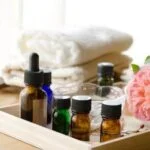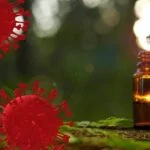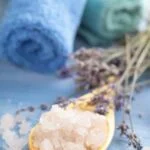Herbology and aromatherapy are two popular practices in alternative medicine that harness the power of plants for healing purposes. While both approaches center around natural remedies, they employ different methods and emphasize different aspects of plant usage. Herbology, also known as herbalism, focuses on the medicinal properties of various herbs and plants, using different parts of the plant for therapeutic benefits.
On the other hand, aromatherapy utilizes essential oils extracted from plants for their aromatic properties and therapeutic effects. Understanding the differences between these practices can help individuals make informed choices about which approach may be more suitable for their specific needs.
In recent years, there has been a growing interest in alternative medicine and natural healing practices. Many people are turning to herbology and aromatherapy as alternatives or complements to conventional medical treatments. These practices offer holistic approaches that take into account not only physical health but also emotional well-being.
Herbology is an ancient practice with roots dating back thousands of years. It involves the use of various parts of plants, including leaves, flowers, roots, bark, and seeds, to create remedies that support health and address specific ailments or imbalances in the body. The preparation methods can vary widely – from teas and tinctures to poultices and salves – depending on the desired effect and targeted area of application.
Unlike herbology, aromatherapy primarily focuses on the sense of smell as a means of promoting well-being. It involves extracting essential oils from plants through processes such as distillation or cold pressing. These concentrated oils have potent aromatic properties that are believed to have therapeutic effects on both physical and emotional health. Aromatherapy employs various methods such as inhalation, topical application, or diffusion to disperse these oils into the air or directly apply them to the skin.
By exploring the fundamental aspects of herbology and aromatherapy, one can gain a deeper understanding of these practices and their unique contributions to natural healing. As we delve further into the specifics of each approach, we will discover the key differences in methodology, therapeutic methods, and potential benefits that they offer. Ultimately, embracing the power of natural healing through herbology and aromatherapy can provide individuals with alternative paths toward optimal well-being.
Understanding Herbology
Herbology, also known as herbalism, is the practice of using medicinal plants and herbs for healing purposes. It has been used for centuries in various cultures around the world and is deeply rooted in traditional medicine systems. The origins of herbology can be traced back to ancient civilizations such as China, India, and Egypt, where plants were recognized for their therapeutic properties.
In herbology, the primary focus is on utilizing different parts of plants, including leaves, roots, flowers, seeds, and bark. These plant materials are prepared in various ways to extract their beneficial compounds. Common methods of herb preparation include making teas or infusions, creating tinctures or extracts by soaking plant material in alcohol or other solvents, making poultices or compresses with crushed or powdered herbs applied to the skin, and producing salves or ointments for topical application.
The use of medicinal herbs in herbology offers a wide range of health benefits. Many herbs have immune-boosting properties that can help strengthen the body’s natural defense mechanisms. Some herbs are known for their digestive benefits and can alleviate issues such as bloating or indigestion. Furthermore, herbology can be effective in treating common ailments like colds, headaches, muscle pain,and insomnia.
| Herb | Health Benefits |
|---|---|
| Chamomile | Relieves anxiety and stress; aids sleep |
| Echinacea | Boosts immune system; helps fight infections |
| Ginger | Aids digestion; reduces nausea |
| Lavender | Promotes relaxation; relieves headaches |
Exploring Aromatherapy
Aromatherapy is a practice that harnesses the therapeutic benefits of essential oils derived from plants to promote physical, emotional, and mental well-being. It is believed to have originated thousands of years ago and has been used in various cultures for its healing properties. In contemporary times, aromatherapy has gained popularity as an alternative approach to complement conventional medicine.
The Use of Essential Oils
At the heart of aromatherapy are essential oils, which are highly concentrated extracts derived from different parts of plants like leaves, flowers, stems, bark, or roots. These oils capture the natural aromatic compounds and volatile substances present in the plants. Each essential oil possesses unique chemical compositions and characteristics that contribute to its specific therapeutic benefits.
There are numerous essential oils available with different scents and properties. Lavender oil, for example, is known for its calming effects and ability to alleviate stress and promote sleep. Peppermint oil is often used to reduce headaches and provide relief from nausea. Tea tree oil is valued for its antimicrobial properties and can be applied topically to treat skin conditions like acne or fungal infections.
The Sense of Smell in Aromatherapy
One distinguishing feature of aromatherapy is its reliance on the sense of smell as a gateway for promoting healing effects. Our olfactory system links directly to the limbic system in our brain, which plays a crucial role in emotions, memory, and behavior. When we inhale essential oils through diffusers or inhalations, their microscopic molecules interact with receptors in the nasal passages and trigger responses in our limbic system.
The inhalation of specific aromas can invoke various physiological reactions within our bodies. For instance, inhaling lavender may induce relaxation by calming the nervous system and reducing cortisol levels associated with stress. In contrast, citrus scents like lemon or orange can invigorate and uplift mood. The inhalation method in aromatherapy allows for a quick and effective way to access the benefits of essential oils through their aromatic properties.
The Difference in Approach
When it comes to herbology and aromatherapy, one of the key differences lies in their approach to healing. Herbology emphasizes the usage of the entire plant, including its leaves, roots, flowers, and other parts. In herbology, various methods are employed for preparing and administering these plants for therapeutic purposes.
To ensure maximum benefits from herbs, they are often used in different forms such as teas, tinctures (alcohol extracts), poultices (herb-filled dressings), and salves (ointments). This approach allows for a comprehensive utilization of the plant’s healing properties. For example, an individual suffering from digestive issues might benefit from herbal teas that soothe and promote healthy digestion.
On the other hand, aromatherapy focuses on essential oils extracted from plants. These highly concentrated oils contain potent aromatic compounds known for their therapeutic effects. Aromatherapy utilizes various methods such as diffusion, topical application, and inhalation to harness the power of these essential oils.
Diffusing essential oils into the air through a diffuser allows them to be inhaled and their fragrance to be dispersed throughout a space. Topical application involves diluting essential oils with carrier oils and applying them directly to the skin for absorption. Inhalation techniques involve breathing in the aroma directly from a bottle or by using a personal inhaler. The sense of smell is uniquely linked to emotions and memories, making aromatherapy an effective method for promoting relaxation and reducing stress.
In summary, while herbology focuses on utilizing different parts of plants in various preparations for holistic healing benefits, aromatherapy concentrates on extracting essential oils from plants to promote well-being primarily through olfactory stimulation. Understanding these contrasting approaches can help individuals determine which practice aligns best with their specific needs and preferences in achieving natural healing benefits.
Healing Methods and Benefits in Herbology
Healing Methods in Herbology
In the field of herbology, there are various methods employed to harness the healing properties of plants and herbs. One common method is creating herbal teas, which involves steeping dried or fresh plant material in hot water. These teas can be consumed for their therapeutic benefits such as reducing inflammation, promoting relaxation, or supporting digestion.
Another method used in herbology is preparing tinctures. Tinctures are concentrated liquid extracts made by soaking herbs in alcohol or a mixture of alcohol and water. This extraction process helps to preserve and concentrate the active compounds within the plants. Tinctures are often taken orally or applied topically for targeted healing effects on specific conditions.
Poultices and salves are additional healing methods used in herbology. Poultices involve applying a paste made from crushed herbs directly onto the skin, often covered with a cloth or bandage.
This method allows for localized relief from ailments like bruises, cuts, or insect bites. Salves, on the other hand, are a mixture of herbs infused into oil and combined with beeswax to create a semi-solid ointment that can be applied topically for various purposes such as soothing skin irritations or promoting wound healing.
Benefits of Herbology
Herbology offers a wide range of health benefits due to its holistic approach to wellness. By utilizing medicinal herbs and plants in various forms, it allows for a natural way to support overall health and well-being. One significant benefit of herbology is its ability to boost the immune system. Many herbs contain antioxidants and phytochemicals that help strengthen the body’s defenses against infections and diseases.
Additionally, herbology can alleviate digestive issues by providing relief from symptoms such as bloating, indigestion, or constipation. Certain herbs have digestive properties that promote healthy digestion and soothe the gastrointestinal tract.
Furthermore, herbology can be effective in treating common ailments like colds, coughs, headaches, or muscle pain. Various herbs possess analgesic and anti-inflammatory properties that can help reduce symptoms and improve overall comfort.
Overall, herbology offers a natural approach to healing and well-being with its diverse range of healing methods and potential benefits. The utilization of herbal teas, tinctures, poultices, and salves allows individuals to tap into the power of plants, harnessing their healing properties in various formats. By incorporating herbology into their wellness routines, individuals can strive towards optimal health in a holistic and natural way.
Healing Methods and Benefits in Aromatherapy
Aromatherapy is a practice that utilizes essential oils extracted from plants to promote healing and overall well-being. The methods of employing aromatherapy are diverse and offer a range of benefits to individuals seeking natural remedies for various conditions.
One common method of using aromatherapy is through diffusing essential oils. Diffusers disperse the oils into the air, allowing them to be inhaled. This method is particularly effective in creating a relaxing and soothing atmosphere, reducing stress, and improving mood. Essential oils like lavender, chamomile, and bergamot are often used in diffusers for their calming properties.
Another way to utilize aromatherapy is through topical application. Essential oils can be diluted with carrier oils such as jojoba or coconut oil and applied directly to the skin. This method allows for targeted relief from specific ailments such as headaches or muscle pain. For example, peppermint oil can be massaged onto the temples to relieve tension headaches, while eucalyptus oil can be applied to the chest for congestion relief.
Inhalation is also a popular method in aromatherapy. This involves inhaling essential oils directly from the bottle or using steam inhalation techniques. Inhaling therapeutic oils like eucalyptus or tea tree oil can help alleviate respiratory issues like coughs or sinus congestion.
The benefits of aromatherapy extend beyond physical healing. The practice has been found to have profound effects on mental and emotional well-being as well. Aromatherapy can reduce anxiety, uplift mood, improve focus, and even promote better sleep. Different essential oils have unique properties that cater to specific needs; for instance, citrus scents like lemon or orange can provide an energy boost and enhance concentration.
Overall, aromatherapy offers a holistic approach to healing by leveraging the power of plants’ aromatic compounds. Whether it’s utilizing diffusers, topical application, or inhalation methods, individuals can experience the therapeutic benefits of essential oils for a wide range of physical and emotional conditions.
Safety Considerations in Herbology and Aromatherapy
When it comes to alternative medicine practices such as herbology and aromatherapy, it is important to prioritize safety and exercise caution. While these practices offer numerous benefits, they also come with potential risks that should not be overlooked. Understanding the safety considerations in herbology and aromatherapy is essential for using these methods effectively and responsibly.
In herbology, the use of medicinal herbs and plants requires proper knowledge and understanding. It is crucial to identify plants correctly as there can be toxic or harmful varieties that may resemble similar-looking beneficial plants. Additionally, some herbs may interact with certain medications or have contraindications for specific health conditions. Therefore, consulting with a qualified herbalist or healthcare practitioner is highly recommended to ensure safe and appropriate usage.
Similarly, aromatherapy requires careful consideration of essential oils used. Essential oils are highly concentrated substances that can cause skin irritation or allergic reactions when not properly diluted or applied. Some essential oils are also not suitable for use during pregnancy or for individuals with certain medical conditions. It is advisable to consult with a certified aromatherapist who can guide you on proper dilution ratios, application methods, and safety precautions.
Both herbology and aromatherapy require proper handling, storage, and dosage measurements. Incorrect preparation or administration of herbal remedies or essential oils can lead to adverse effects on physical health. Furthermore, it is crucial to source herbs and essential oils from reputable suppliers to ensure their quality and purity.
Choosing Between Herbology and Aromatherapy
When it comes to choosing between herbology and aromatherapy, individuals should consider their specific needs and preferences. While both practices offer natural healing methods, there are certain situations where one may be more advantageous than the other. By understanding the differences and benefits of each practice, individuals can make an informed decision about which approach aligns best with their goals for holistic well-being.
In general, herbology focuses on the use of medicinal herbs and plants in their entirety. This includes using plant parts such as leaves, roots, stems, flowers, or seeds to create various preparations like teas, tinctures, poultices, and salves. Herbology offers a wide range of health benefits, including boosting the immune system, alleviating digestive issues, providing relief from common ailments like colds or headaches, and even supporting mental health.
On the other hand, aromatherapy relies on the use of essential oils extracted from plants through processes like steam distillation or cold-pressing. These essential oils are highly concentrated plant extracts that can be used in several methods such as diffusing them into the air, applying topically to the skin after dilution with carrier oils or inhalation.
Aromatherapy is primarily used for its therapeutic effects on emotions and mood regulation. It can help reduce stress and anxiety levels while promoting relaxation and improving sleep quality.
To determine whether herbology or aromatherapy is more suitable for an individual’s needs, it is crucial to consider what they hope to address or achieve through these practices. If someone is looking for a broader spectrum of physical healing benefits targeting specific conditions like digestive issues or immune support has a preference for utilizing different plant parts rather than solely relying on essential oils; herbology may be a better fit.
On the other hand if someone is seeking emotional well-being enhancements along with relaxation techniques promoting balance in everyday life hence wishes to indulge in the manipulation of senses for mood regulation; aromatherapy might be the option to consider.
Conclusion
In conclusion, herbology and aromatherapy are two distinct practices that offer powerful natural healing potential. While herbology focuses on whole plant usage and various methods of preparation and administration, aromatherapy utilizes essential oils extraction and the sense of smell for therapeutic benefits. Both approaches have unique healing methods and offer a range of health benefits.
In order to choose between herbology and aromatherapy, individuals should consider their specific needs and preferences. Herbology may be more suitable for those looking for a holistic approach that harnesses the healing properties of different parts of plants, while aromatherapy may be preferred by those seeking immediate relief through the use of essential oils.
It is important to note that safety considerations should always be taken into account when using herbs and essential oils. Consulting with a qualified practitioner can provide guidance on proper usage and minimize any potential risks or side effects.
Ultimately, embracing the power of natural healing means considering both herbology and aromatherapy as complementary approaches to wellness. By integrating these practices into their routines, individuals can experience the numerous benefits that alternative medicine has to offer. So why not take a step towards enhancing your well-being today? Embrace natural healing and unlock its transformative potential in your life.
Frequently Asked Questions
Is aromatherapy part of herbalism?
Aromatherapy is not considered to be a part of herbalism, although it does utilize certain aspects of herbal plants. Herbalism is a holistic approach to healing and treating various ailments using the entire plant, including its roots, stems, leaves, and flowers. It involves making use of the plant’s chemical constituents through methods like teas, tinctures, or infusions to support the body’s natural healing processes.
On the other hand, aromatherapy focuses solely on extracting essential oils from plants and using them for therapeutic purposes through inhalation or topical application. While both practices involve plants and their properties, they differ in their methods and approaches.
What is the difference between herbalism and essential oils?
The main difference between herbalism and essential oils lies in the form in which the plants are used. Herbalism involves utilizing the whole plant material – leaves, stems, flowers, roots – in various preparations such as teas or tinctures to promote healing and wellness. It encompasses a broad approach that considers the synergistic effects of different compounds within plants as they work together to bring about therapeutic benefits.
In contrast, essential oils are highly concentrated extracts obtained from plants through distillation or other extraction methods. These volatile compounds capture the aromatic essence or unique scent of a plant and are used for specific therapeutic purposes such as aromatherapy or topical applications after being diluted with carrier oils. Therefore, while both herbalism and essential oils draw from botanical sources, their scope and applications differ.
What is the difference between herbology and herbalism?
Herbology refers to the study or science of herbs—how they grow abundance domains behave within various ecosystems—and focuses on their botanical properties, classification systems horn tailored plant profiles general informational use With regard to medical treatments clinical applications this sense herbology is more theoretical than practical whereas herbalism pertains specifically using herbs for health-related remedies conditions Herbalists actively engage with understanding traditional uses herbs energetic medicinal values utilizing knowledge prepare administer treatments Their knowledge often includes history folklore cultural significance different recognize individual herb’s specific indication properties they may work combinations address needs person addressing branch encompasses plant-based medicine holistic approach incorporating concepts like energetics vitalism synergy ensure effective results overall wellbeing Thus herbology acts foundation herbalism while incorporates practical methodologies promoting individual’s health.

Are you looking for a natural way to improve your health and wellbeing?
If so, aromatherapy may be the answer for you.






